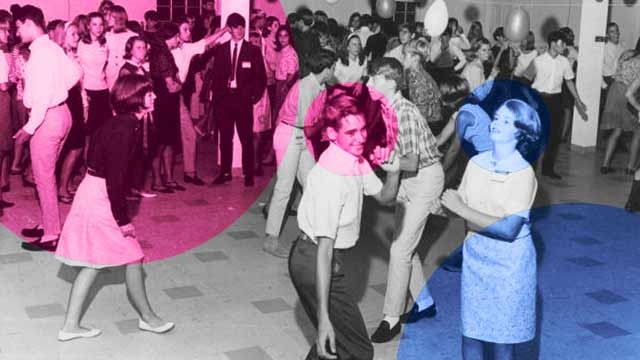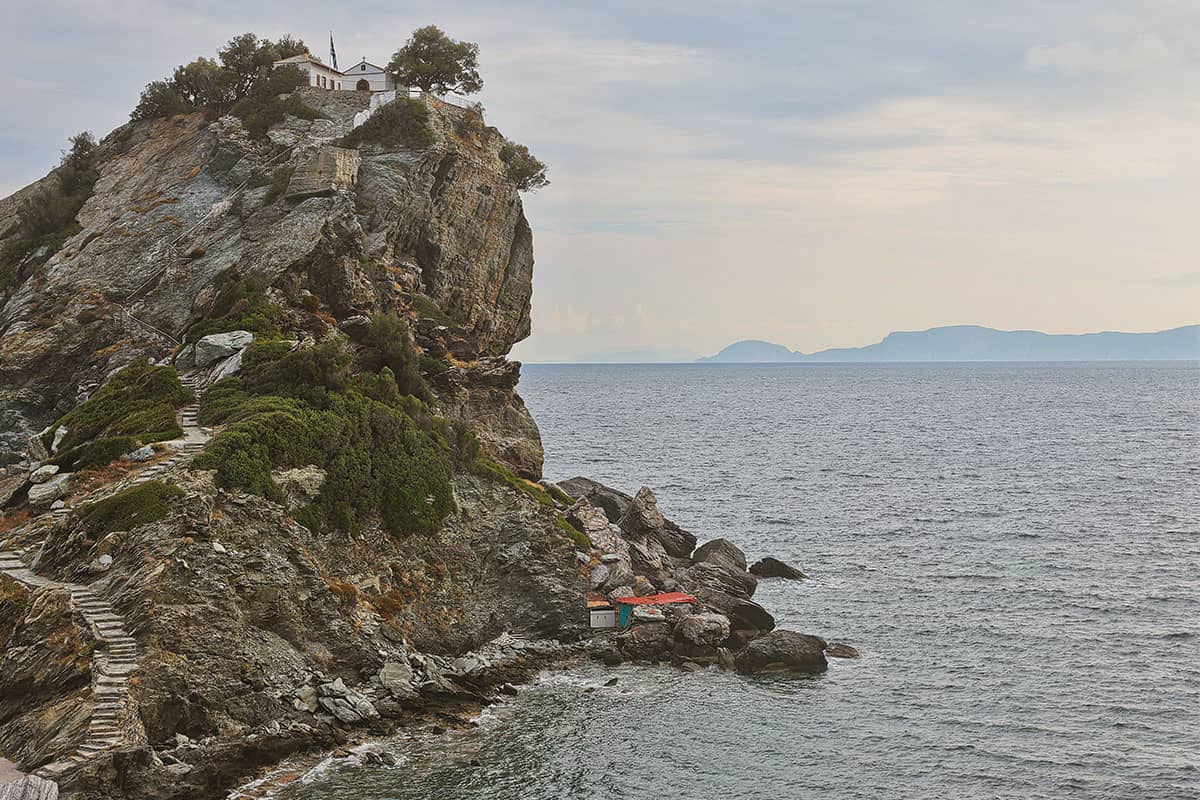The Haunted History Of One Of Tennessee’s Most Famous Hiking Destinations
Great Smoky Mountain National Park is a hub for Tennessee’s most famous and sought after hiking destinations. With spectacular views, frequent wildlife sightings, and a variety of trails, Cades Cove valley is high up on the list of most popular destinations to hit while traveling in Tennessee. Cades Cove is a valley surrounded by mountains with an 11-mile one-way road looping around the area, giving travelers and hikers the opportunity to explore trails, utilize picnic areas, view wildlife, sight see, […] The post The Haunted History Of One Of Tennessee’s Most Famous Hiking Destinations first appeared on Whiskey Riff.


Great Smoky Mountain National Park is a hub for Tennessee’s most famous and sought after hiking destinations. With spectacular views, frequent wildlife sightings, and a variety of trails, Cades Cove valley is high up on the list of most popular destinations to hit while traveling in Tennessee.
Cades Cove is a valley surrounded by mountains with an 11-mile one-way road looping around the area, giving travelers and hikers the opportunity to explore trails, utilize picnic areas, view wildlife, sight see, and walk around the many historical structures left abandoned.
While known for its scenic beauty and trail heads, many are unaware of Cades Cove’s rich and… somewhat spooky history beneath its raving visitor reviews.
History
In the 1700s, Cherokee Indians were the first documented people to travel to the valley now known as Cades Cove. Living off the land and hunting the abundance of deer, bison, and elk, they stayed for over another one hundred years before European settlers arrived and began clearing land for farming and log structure building. The land was extremely fertile, making it the perfect farming location for many crops, specifically corn, and leading the way for more development. In the mid 1800s the settlement had grown to about 685 people, with large families and a growing sense of community. Around this time, schoolhouses, churches, and cemeteries were built to accommodate a growing town.
In 1927, a large piece of land in the mountains north of Cades Cove was purchased by the state of Tennessee for the establishment of a National Park. This stirred up mixed feelings from long term residents of the area. While many agreed to leave for a large sum of money, others signed life leases to stay until they died. Under these life leases, residents could remain in the area under rules set by the National Park Service pertaining to hunting and usage of the land. Twenty years later, the last community facility, a post office, closed as the community dispersed exponentially from the area.
Abandoned in the 1960s, the National Park Service took over the area and maintained it to look as it did when the settlers were still there. Log cabins, churches, schoolhouses, and other community facilities still stand abandoned in the park, giving visitors a plunge into its historical background, and occasionally some haunting encounters.
Ghost Stories
A town lost to time with a rich history in the Appalachian Mountains, I mean we are just getting set up for a scare. While some get lost in the views, other travelers can’t look past the eerie feeling they get when they step out of their car to examine an abandoned building up close.
The most famous ghost story about Cades Cove is the tale of “The Cussing Cover,” a story that has been passed down by word of mouth for over one hundred years. The story is centered around Mavis Estep, who was born into a quiet family local to the cove. Mavis and her husband Basil lived together in a two-bedroom log cabin by the Whistling Branch stream. Even with her seemingly relaxing life, Mavis was tormented with a troubling fear of lightening. It all started after a local legend told her she was destined to die by a lightning strike because she was born during a thunderstorm. While it may seem a bit irrational to us, Mavis took her prophecy very seriously, exiling any and all metal beds or furniture from her home and refusing to quilt with metal needles. This was huge for Mavis because she was a keen quilter, always working on a new project.
The name “The Cussing Cover” actually comes from her favorite quilting creation. She made it out of a red flannel her husband wore during their first argument as a married couple. Reportedly, there was harsh language used during the argument, leading her to name the quilt after their not-so-PG exchange.
Years later, Mavis fell severely ill, and that would ultimately cause her death— not lighting, might I add. But Mavis did not succumb to her illness before making Basil promise her two things:
1. To never sell any of her quilts.
2. To never place one of her quilts on a metal bed.
After her passing, Basil remarried a young woman named Trulie Jane who also lived in Cades Cove. Things went smoothly the first few months living together, but then Trulie began complaining that their wooden bed wasn’t good enough for her. You know what they say: happy wife, happy life, right? Basil eventually gave in, purchasing a metal framed bed for their room and breaking his late wife’s strict set of rules for their home. Then, one exceptionally cold night, Trulie asked Basil if he could bring one of Mavis’ quilts on the bed to sleep with. Basil obliged and they went to sleep warm under Mavis’ Cussing Cover quilt.
Later that night, Trulie woke up abruptly to the ghostly figure of an angry woman standing at the foot of the bed. When she locked eyes with the apparition, she screamed in horror, waking up Basil. However, when Basil woke up, the woman had disappeared. Even though she was horrified, Basil was able to coax his new wife back to sleep with the reassurance that it was only a bad dream. A few hours later, a blinding flash of light entered the home, knocking Truile out of bed. When the shock faded and she took a closer look, she found her husband burnt to a crisp on the smoking bed where… you guessed it, a strike of lightning had miraculously hit him dead on. It’s important to mention that there were no known thunderstorms reported in the surrounding area at the time, just one fatal strike of lightning into the Estep residence. I guess they never tell you the real truth: unhappy dead wife, unhappy… remaining life.
While the location of the Estep’s home is unknown, visitors who know about the legend often attempt to identify which remaining abandoned cabin could have belonged to them. Even today, people report hearing strange female voices in some of the cabins and crazy storms that seemingly appear out of nowhere only to dissipate minutes later.
Many travelers have taken to sharing their encounters online. There is even an entire segment of the Cades Cove website dedicated to haunted experiences, sharing the most eerie buildings located on the land. From suspected lost cemeteries, to reports of an apparition of a woman coming out of the wall at the Primitive Baptist Church, this place really strikes home with ghosts… literally.
Speaking from my experience at Cades Cove last summer, while the wildlife and views are incredible, some of those abandoned buildings did give me the heebie-jeebies, especially the old cemeteries.
I know that next time I go, I’ll be checking for burn marks on the ground of the bedrooms in those cabins. Perhaps I’ll experience a storm brought by Mrs. Mavis Estep herself…
The post The Haunted History Of One Of Tennessee’s Most Famous Hiking Destinations first appeared on Whiskey Riff.




























































































:format(webp)/cdn.vox-cdn.com/uploads/chorus_image/image/66321622/1206682849.jpg.0.jpg)

























:format(webp)/cdn.vox-cdn.com/uploads/chorus_image/image/67131045/1261725039.jpg.0.jpg)





































/origin-imgresizer.eurosport.com/2024/02/04/3880159-78836108-2560-1440.jpg)



















